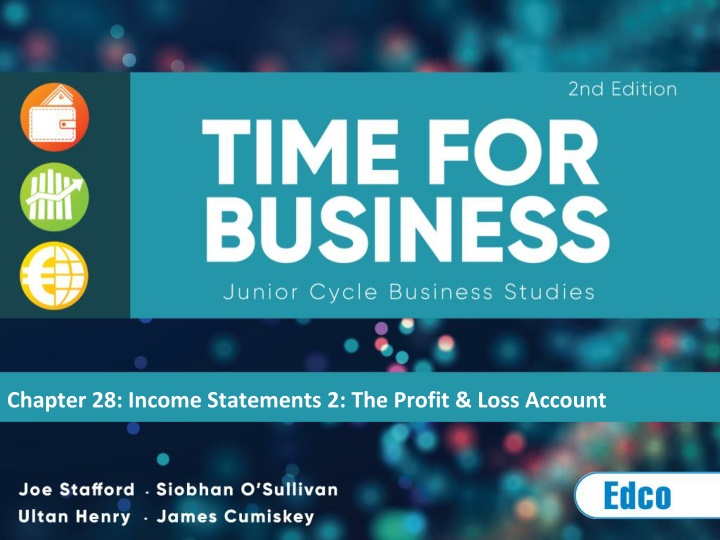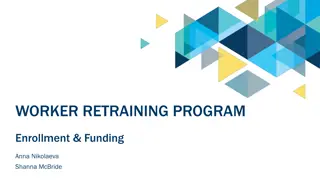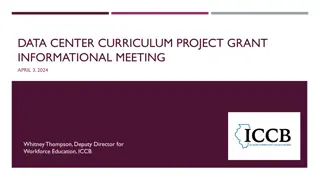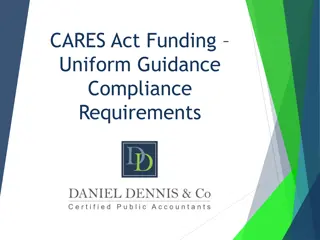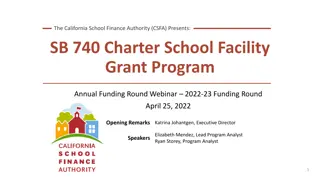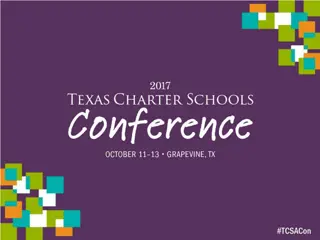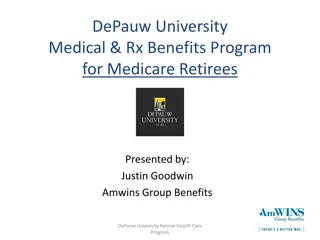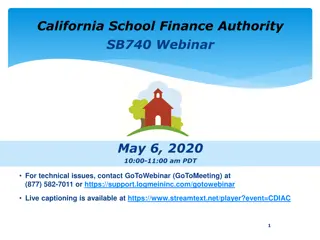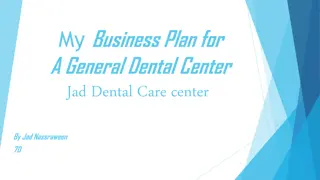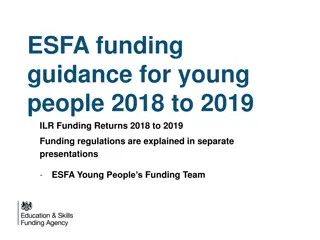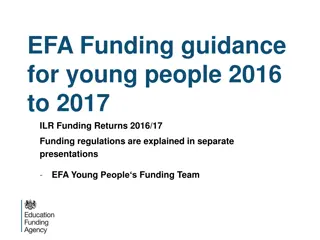University Center Program Overview and Funding Details
The University Center (UC) Program focuses on leveraging university assets for regional economic development, fostering STEM skills, and supporting innovation and entrepreneurship. The program overview covers collaboration with EDA partners, job creation, talent development, and business expansion in innovation clusters. It also details program allocation, eligibility requirements, award periods, and match requirements for applicants.
Download Presentation

Please find below an Image/Link to download the presentation.
The content on the website is provided AS IS for your information and personal use only. It may not be sold, licensed, or shared on other websites without obtaining consent from the author.If you encounter any issues during the download, it is possible that the publisher has removed the file from their server.
You are allowed to download the files provided on this website for personal or commercial use, subject to the condition that they are used lawfully. All files are the property of their respective owners.
The content on the website is provided AS IS for your information and personal use only. It may not be sold, licensed, or shared on other websites without obtaining consent from the author.
E N D
Presentation Transcript
Chapter 28 Learning intentions In this chapter you will learn to: Differentiate between gross profit and net profit Illustrate the difference between current and capital expenditure Prepare an income statement (profit and loss account) in order to calculate net profit Explain how business profits may be distributed Prepare a profit and loss appropriation account to calculate the closing reserves for a company at the end of its financial year. Textbook page reference: 325
Chapter 28 Income Statement Remember, an Income Statement is made up of a Trading Account and a Profit and Loss Account. The Trading Account is used to calculate gross profit (or loss) while the Profit & Loss Account is used to calculate net profit (or loss). Textbook page reference: 326
Chapter 28 Accounting for expenses Net Profit = Gross Profit - Expenses Expenses, also called overheads, include a range of additional costs involved in operating a business, e.g. rent, wages, insurance. Textbook page reference: 326
Chapter 28 Accounting for expenses Textbook page reference: 326
Chapter 28 Capital expenditure vs. current expenditure Capital expenditure refers to money spent on the purchase of items that will last for several years. These items are called fixed assets, for example buildings, vehicles, machinery and equipment. Textbook page reference: 326
Chapter 28 Capital expenditure vs. current expenditure Current expenditure (also called revenue expenditure) refers to expenses involved in the day-to-day running of the business. Examples include advertising and fuel costs for vehicles. Textbook page reference: 326
Chapter 28 Expenses The following are some of the most common business expenses that appear in the Income Statement (profit and loss account). Wages and salaries Postage and stationery Insurance Light and heat Telephone Rent and rates General expenses Office expenses Cleaning expenses Travel expenses Repairs Advertising Vehicle operating expenses Bank overdraft interest Selling expenses Marketing expenses Interest on loans Audit fees Carriage outwards Depreciation of fixed assets Bad debts Textbook page reference: 327
Chapter 28 Audit fees An auditor s role is to examine company accounts in order to ensure that they have been properly prepared and that the accounts present a true and fair picture of the financial position of the business. Textbook page reference: 327
Chapter 28 Carriage outwards The transport and delivery costs associated with selling goods to customers. This expense is different from carriage inwards, which is entered in the trading account. Textbook page reference: 327
Chapter 28 Bad debts A bad debt is a debt which cannot be recovered. When a debtor is unable to repay the debt, the money is written off as a non-recoverable loss. It is treated as an expense in the Income Statement (profit and loss account). Textbook page reference: 327
Chapter 28 Depreciation Depreciation is a reduction in the value of a fixed asset due to age, usage, and wear and tear. Businesses generally write off a portion of the asset s value each year. Textbook page reference: 328
Chapter 28 From trial balance to net profit At the end of the financial year, the ledger accounts and analysed cash book will be balanced and totalled and a trial balance will be drawn up. Textbook page reference: 329
Chapter 28 Stages in the record-keeping process Textbook page reference: 329
Chapter 28 Stages in the record-keeping process 1. The information from the business documents is posted to the book of first entry (analysed cash book). 2. Double entry bookkeeping requires that figures from the analysed cash book are also posted to the ledger accounts. 3. Accounts are balanced and totalled and a trial balance is extracted. 4. Figures from the trial balance are used to prepare the final accounts. 5. The accounts should be analysed to get a better understanding of the current financial position of the business. Textbook page reference: 329
Chapter 28 Points to note Closing stock is not included in the trial balance, but is listed as an extra item below the trial balance. It needs to be included in the trading account section of the income statement. Before preparing the income statement, it is helpful to identify each item in the trial balance and make a note of where it will appear in the final accounts. Textbook page reference: 330
Chapter 28 Monitoring expenses An organisation will monitor expenses to ensure that it is not paying more than it needs to and to maximise net profits. It can do this by: Cutting down on usage if bills are higher than normal. Shopping around for the best deal and switching to a different provider if necessary. Textbook page reference: 332
Chapter 28 The profit and loss appropriation account This final section of the income statement is used to show how the annual profit is distributed. Some of the profit might be used to pay a dividend to shareholders, with the rest held as retained profits (also known as revenue reserves) and used for future investment in the business. Textbook page reference: 332
Chapter 28 The profit and loss appropriation account The P&L appropriation account contains the following entries: Any dividends paid by the business during the current financial year. These are subtracted from the net profit or loss. Any reserves or retained profits carried forward by the business from previous years. These are added to the net profit or loss. Textbook page reference: 332
Chapter 28 Points to note If dividends have already been paid to shareholders, they will be listed in the trial balance as dividends paid. The opening reserve will be listed in the trial balance. The closing reserve represents the retained profit or reserves at the end of the current financial year. The Profit & loss appropriation account will be used to calculate this figure. Textbook page reference: 332
Chapter 28 Recap and review Can you? Differentiate between gross profit and net profit Illustrate the difference between current and capital expenditure Prepare an income statement (profit and loss account) in order to calculate net profit Explain how business profits may be distributed Prepare a profit and loss appropriation account to calculate the closing reserves for a company at the end of its financial year.
Chapter 28 Credit slide Shutterstock
